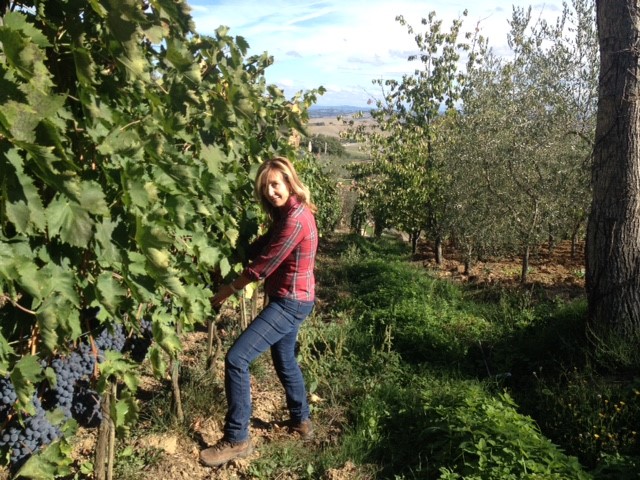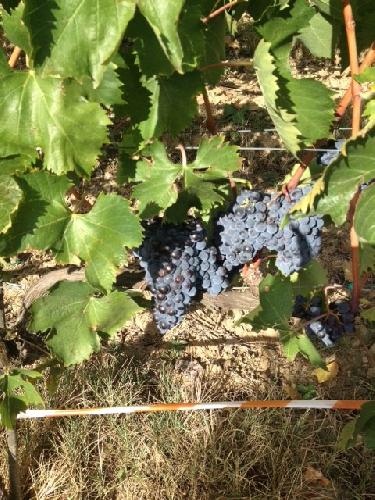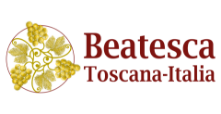Tuscany has a winemaking tradition that goes back to the Etruscan period, keeping this region at the top of enology and winemaking. The rolling hillsides of Tuscany provide an ideal setting for grapevines and the growth of important grape varieties. The indisputable “king” of this region is certainly the autochthonous Sangiovese varietal with which Brunello and Rosso di Montalcino are made. This varietal is not so easy to cultivate because of its medium-late maturation and its need for ideal sun exposure, microclimate and altitude.
In spite of the challenges in taking care of this precious plant, the most awaited time of the year is certainly the harvest. It is the moment in which the efforts of one year transform into a tangible reality and which often, in spite of the constant attention, is influenced by factors that may not be avoided or controlled. We are speaking about the climatic factors that are so essential for Sangiovese.
Once the ideal harvest moment comes, the land, which up until that time was populated by only a few workers, is invaded by wine lovers, helpers, or simply the curious.

The harvest typically takes place between the months of July and October (in the southem hemisphere from February to April). This is the period in which the grapes have reached their desired maturation, or when the ratio between the sugar concentration and acidity has reached the optimal value for the type of wine to be produced.
Each winemaker, who is overseen and advised by their own enologist, chooses the most favourable period for the harvest, which may vary based on the type of wine to be produced, the production area, as well as their own style.
The harvest time may depend on various factors as previously mentioned:
- Climatic conditions
- Production area: vineyards with southern exposure mature before those facing north, grapes mature faster as higher altitudes
- Grape variety: white berry grapes generally mature before red berry grapes
- The type of wine they want to produce. In this case, the variables are:
– o sugar content — the higher the content, or the more mature the grape, the higher the alcohol content of the wine produced (the correct level of sugar content is necessary to start alcoholic fermentation)
– o acidity – necessary both to avoid the proliferation of bacteria (and therefore disease)
– and for the ensuing conservation of wine o aromatic components
– they vary during grape maturation and contribute to determining the organoleptic properties of the wine.
The harvest methodology can be divided into two types and can also vary according to the type of wine that the winemaker wishes to produce.
Manual Harvest
This type of harvest is used in the production of fine wines being that it is necessary to carefully select the grapes, a first selection is made during the growing phase bringing only the best bunches of grapes to maturation resulting in a noteworthy quality of the finished product.
In Montalcino this is definitely the most used harvest technique.



Mechanical Harvest
In this case the harvest is helped either by small-sized support machinery which speeds up the manual labour process or by big-sized, sometimes self-propelled, harvest machinery that substitutes manual labour. The grape harvest takes place in two ways: vertically or laterally. In this type of harvest, the production increases to the detriment of the quality/integrity of the harvested grapes. The product that is detached from the vine is then gathered up before it hits the ground.
During the harvest, a series of small rules must be followed that guarantee the quality of the work carried out and consequently the quality of wine produced. It is advisable to avoid harvesting wet grapes given that the water could influence the quality of the must. The hottest time of the day must be avoided, and the grapes must be transported as quickly as possible to the vinification area to prevent the start of unwanted fermentation.
After the grapes are taken to the vinification area, destemming takes place when the grapes are separated from the stalks: a delicate but important step because the incision/breaking of the stalk may leave unwanted tannins in the must.
The last step before fermentation is the pressing. This procedure was once done without the help of machinery and only with the sheer strength of the farmers who crushed the grape bunches in tubs with their bare feet. Today, sophisticated machinery is used so that the grapes are stressed in the least way possible in order to maintain their organoleptic integrity. The obtained must is purified and put into big vats for fermentation.
Finally there is the first racking or the separation of the young wine from the lees. The wine is racked in the same vats or in wood for the second fermentation followed by a period of racking to remove the deposit sediment. The wine is then ready for ageing in barrels and finally in bottles.
2014 HARVEST in Montalcino
After a difficult summer caused by a string of frequent and abundant rainfall, which increased anxiety levels, Montalcino winemakers drew a sigh of relief. The common wish for a sunny and windy end of summer and early fall to dry the land and grapes came true. Throw in the hard work in the vineyards by producers and agronomists, and we get a “complicated” 2014 harvest but, all in all, top quality rewarding the experience, courage and great care in the management of the vines beforehand as well as further tedious work and selection after the harvest.






The Wine Piramide

